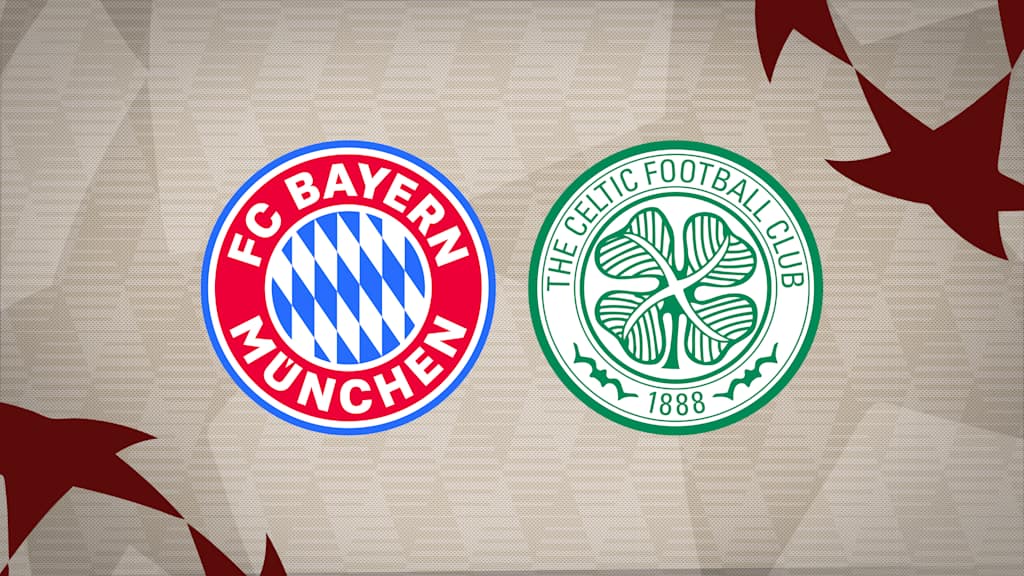
Celtic Park is known for vocal and energetic fans who create a unique atmosphere that can overawe even the most experienced players and coaches. That force is deeply rooted in Scotland’s tense religious and political history that still resonates today. Despite playing in a league that doesn’t have the same standing as others around Europe, Celtic’s special identity and winning mentality – similar to that of Bayern – makes them a footballing powerhouse.

The incessant drizzle would be the least of anybody’s worries – drops from above or even from the side, like in the windy Scottish Highlands. Better still than those wild gale-force winds that sometimes rage through Celtic Park out of nowhere. “There can be situations where you can't hear anything, everything threatens to rip apart, and you still have to make the right decisions and stay calm,” Andreas Hinkel once described. The now 42-year-old played for Celtic for three years, playing a total of 13 Old Firms against city rivals Rangers. “You can be as experienced as you like - the volume, an atmosphere that sometimes comes out of nowhere, can overwhelm you. A throw-in, a free-kick, a corner, a counter-attack can be enough - and it can get hectic,” said Hinkel. “Honestly, that level of force is not normal. You have to deal with it, and it's not that easy.”
An ancient force from Ireland
You can be as experienced as you like - the volume, an atmosphere that sometimes comes out of nowhere, can overwhelm you. A throw-in, a free-kick, a corner, a counter-attack can be enough - and it can get hectic.
Andreas Hinkel, former Celtic player
That force came to Scotland's largest city from Ireland over 130 years ago. In 1887, a Catholic friar founded the club to raise funds for the needy population in Glasgow's East End. Most of the people living there were Irish migrants, who were urgently needed as labourers in the industrial city, but had to struggle with poverty and discrimination. The songs they still play over the loudspeakers inside Celtic Park today date back to this time. They deal with the famine and the War of Independence during the First World War, as a result of which the rivalry between the two Glasgow clubs intensified further.
Nowhere else do two football clubs from the same city reflect a deeper religious and cultural divide than between Celtic and Rangers. All the sympathisers of the Presbyterians, the Scottish Calvinists, are on the side of Rangers, while the Catholic heart of the Irish immigrants beats just as enthusiastically and one-sidedly in favour of Celtic. Until well into the 1960s, it was not possible for a Catholic to play for Rangers. Rangers are loyal to the British crown and their colours are those of the Union Jack. In contrast, a Protestant could occasionally be found at Celtic, because Catholics form a significant minority in Glasgow. On the other hand, Celtic are openly committed to the colours of the Irish Republic and do not wear the thistle, the Scottish national symbol, as their club badge, but rather the Irish shamrock with pride.
Celtic even boast a football martyr in John Thomson, the goalkeeper who jumped for a ball and tragically collided with the knee of a Protestant striker in 1931. Thomson, whose supporters still occasionally sing the ‘John Thomson Song’, succumbed to his fractured skull the next day. Some 40,000 people attended the funeral, and his grave remains an important pilgrimage site for Celtic supporters to this day. The rivalry between the two Glasgow clubs soon became so intense that city factories produced 15 percent more the following Monday if both clubs won their league games. Brexit, which is unanimously opposed by Celtic fans, has further complicated the conflict, not least because it threatens peace between the British and Irish in Northern Ireland.

The immigrants and their descendants, who still make up the majority of Celtic fans today, see the club as a symbol against the imperial influence of Great Britain. Supporters stylise Celtic as the home of outsiders and underdogs. Fans at Celtic Park sing louder than in any other stadium in Europe, because it is not just one corner of passionate supporters who sing, but the entire stadium. “I've known Celtic for a long time. It's a special atmosphere there,” said Bayern coach Vincent Kompany of the draw. Captain Manuel Neuer expressed similar sentiments: “The atmosphere at Celtic is amazing.”
Celtic are 54-time champions of Scotland and also won the European Cup in 1967, beating Inter Milan 2-1 in Lisbon.

There is an almost Bayern-esque winning mentality here, as former player Hinkel told the Süddeutsche Zeitung: “Nothing counts except winning. Basically, both clubs are Scotland's Bayern. They may play in a smaller league, but they are giants.” And then there's this tremendous force. Mauricio Pochettino, who has coached Chelsea, Tottenham Hotspur and Paris Saint-Germain, once said that as a coach you have to expect to lose control of the game there at any time, because the crowd can unleash such an immense force.
It’s gonna be a noisy night – as they like to point out in Glasgow.

Topics of this article



